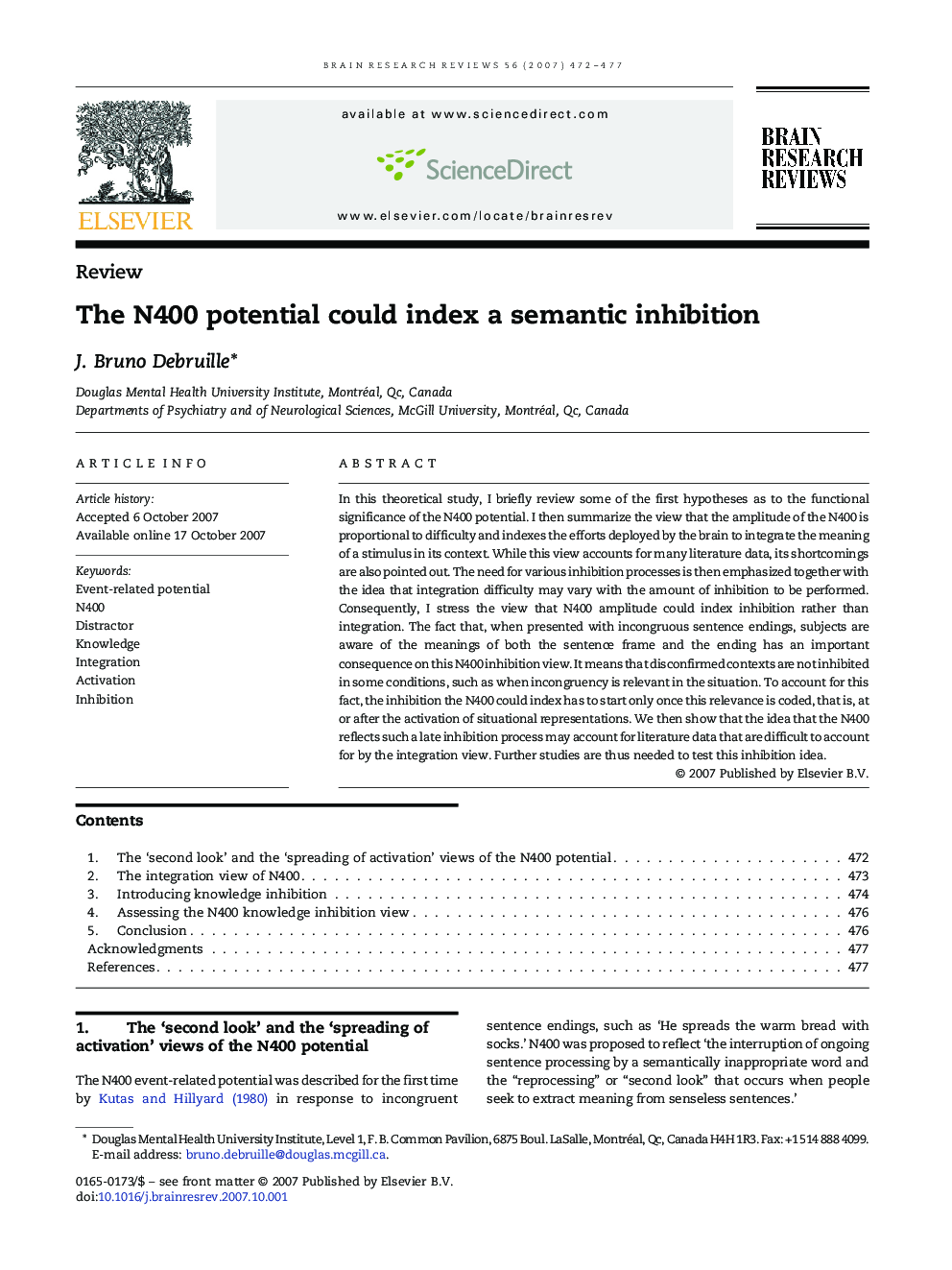| Article ID | Journal | Published Year | Pages | File Type |
|---|---|---|---|---|
| 4334002 | Brain Research Reviews | 2007 | 6 Pages |
In this theoretical study, I briefly review some of the first hypotheses as to the functional significance of the N400 potential. I then summarize the view that the amplitude of the N400 is proportional to difficulty and indexes the efforts deployed by the brain to integrate the meaning of a stimulus in its context. While this view accounts for many literature data, its shortcomings are also pointed out. The need for various inhibition processes is then emphasized together with the idea that integration difficulty may vary with the amount of inhibition to be performed. Consequently, I stress the view that N400 amplitude could index inhibition rather than integration. The fact that, when presented with incongruous sentence endings, subjects are aware of the meanings of both the sentence frame and the ending has an important consequence on this N400 inhibition view. It means that disconfirmed contexts are not inhibited in some conditions, such as when incongruency is relevant in the situation. To account for this fact, the inhibition the N400 could index has to start only once this relevance is coded, that is, at or after the activation of situational representations. We then show that the idea that the N400 reflects such a late inhibition process may account for literature data that are difficult to account for by the integration view. Further studies are thus needed to test this inhibition idea.
